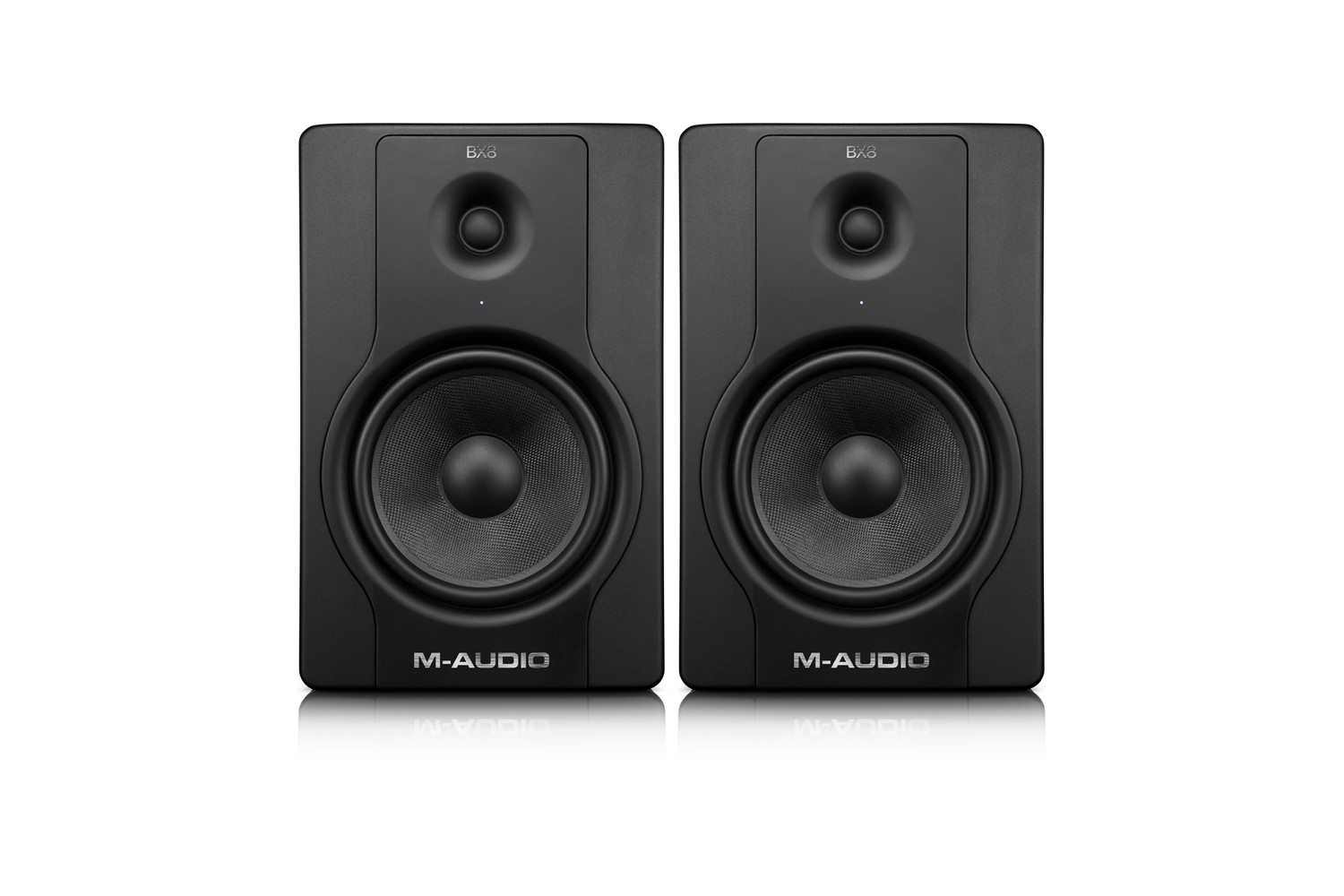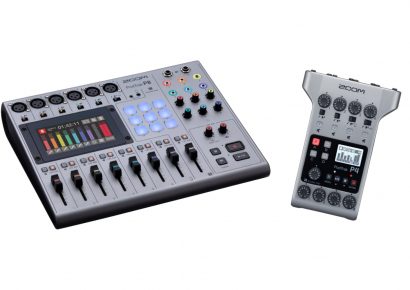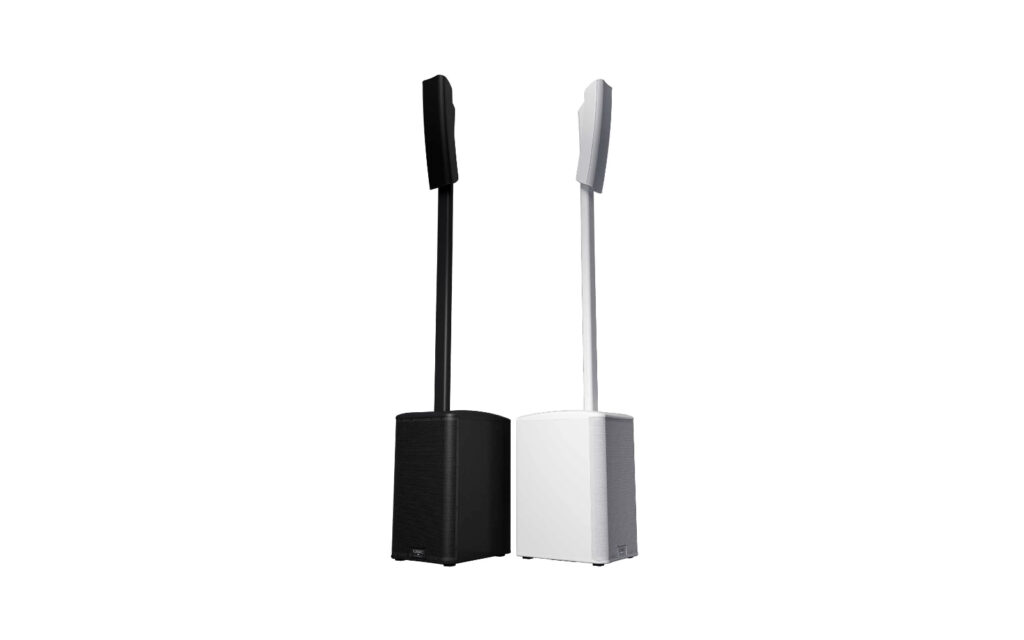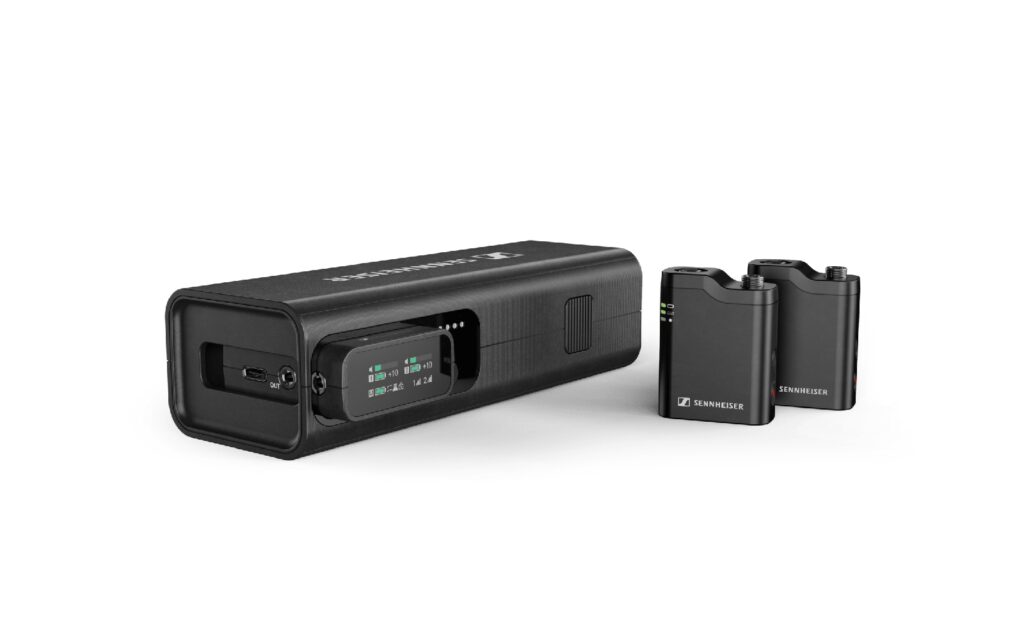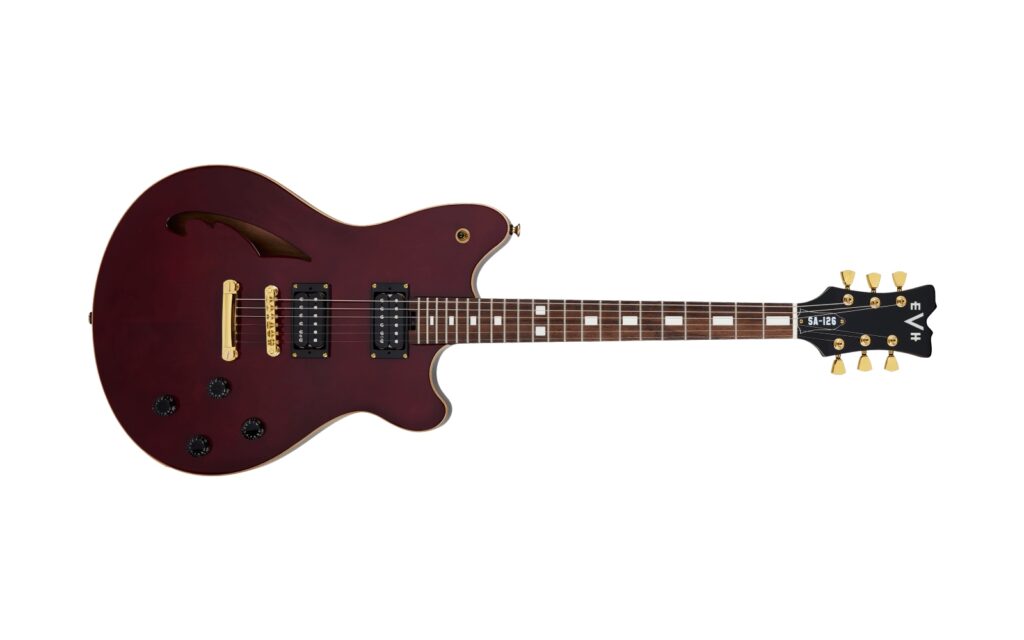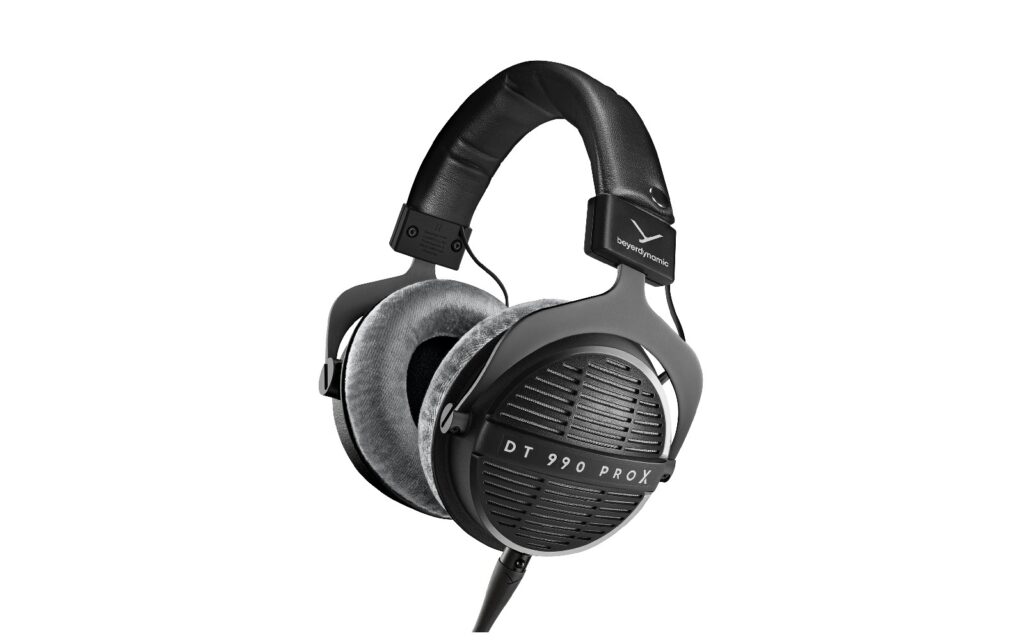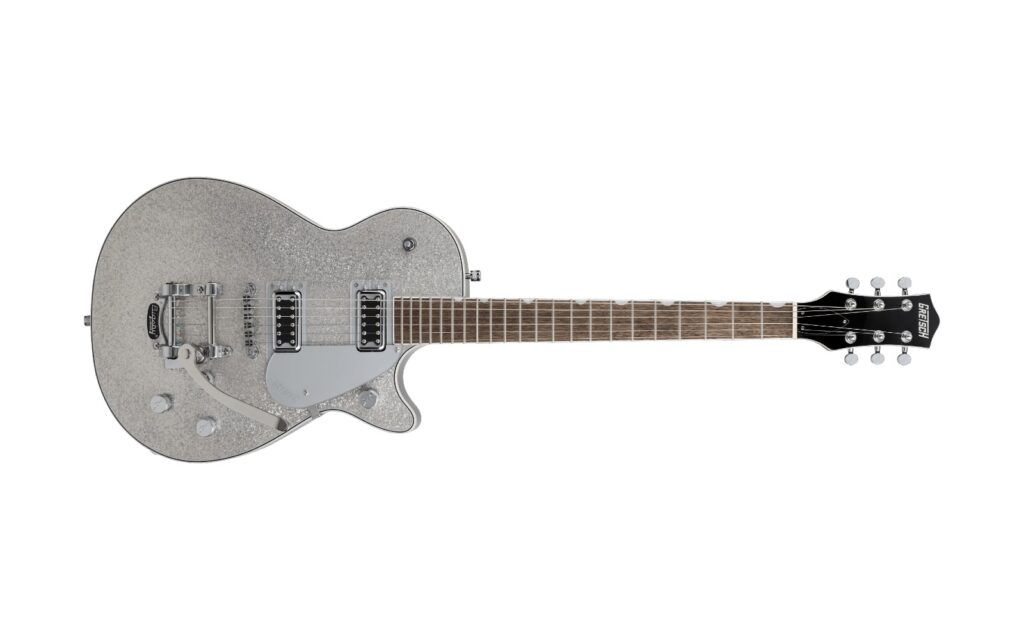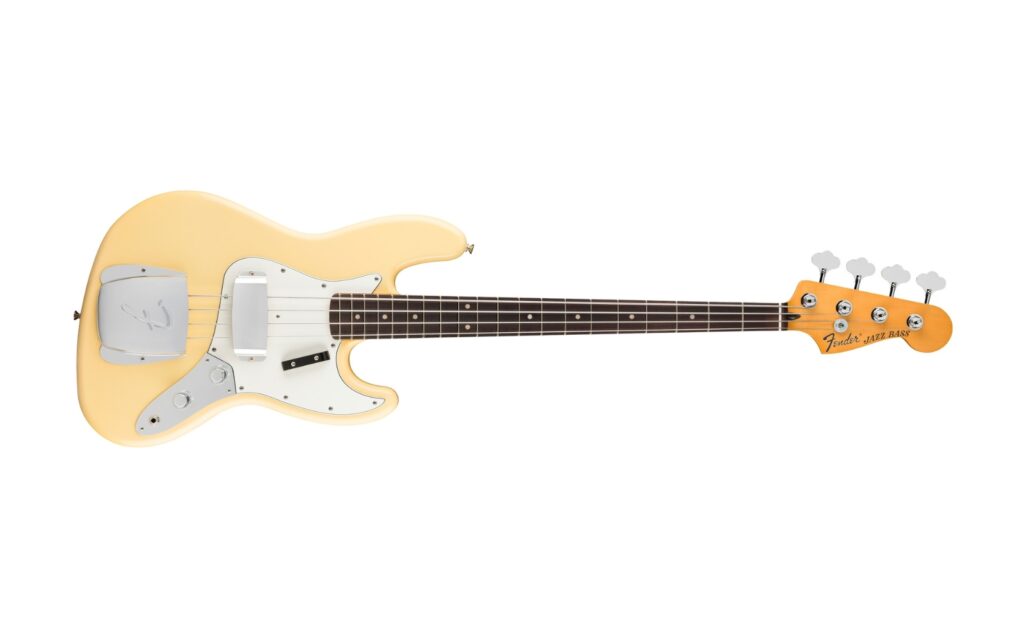Electric Factory | Expect to pay: $559
Producing music from home is an increasingly accessible endeavour.
Companies like M-Audio are producing quality products to fit a budget without sacrificing the user’s ability to produce the best music they can make. From interfaces to MIDI controllers to monitors, you could easily put together a professional-grade recording rig with entirely M-Audio gear.
Explore all the latest monitor, interface, headphone and other recording gear reviews here.
The new BX8 D3 are an 8” active studio reference monitor, designed for rooms of most sizes. The D3 is the flagship of the BX series of monitors, and they feature everything you need in a studio monitor, as well as some improvements to make your critical decision making easier.
The BX8 D3 offer a really balanced response, good bottom end for a mid sized speaker, and a clear midrange. The D3 monitors features upgraded speaker cones and tweeters, and a forward thinking design to maximise the response of the speakers at all volumes.
The enclosures are constructed from vinyl-laminated high-acoustic-efficiency MDF and feature M-Audio’s fastener-less design to reduce any important acoustic energy being lost as it resonates through fasteners, screws or joints. The speakers weigh in at 11kg, so they’re heavy enough to be a quality speaker (that’s the rule of thumb, right?).
They feature a rear facing bass-port, that assists in providing a balanced response and does not blast the user with bottom end. They’re active, powered speakers that are driven by two Class A/B internal amplifiers, with a separate driver for the woofers and the tweeters (150 watts of power with 80 dedicated to lows and 70 reserved for highs).
The 8” woofer’s cones are constructed from Kevlar, a material gaining consistent popularity for its toughness, rigidity and weight, allowing the cones two move quickly and accurately, for accurate transient response for unparalleled monitoring.
At the high end, the tweeters are constructed from treated silk and feature a custom waveguide to ensure a clear, accurate and precise stereo image. On the rear of the speaker you have TRS and XLR inputs, an ‘Acoustic Space’ toggle and a master volume. The ‘Acoustic Space’ acts as a bass cut if required in a smaller room, as the BX8 D3s are designed to go right down to 37Hz and up to 22kHz.
Once plugged in, the D3s are really impressive. Monitoring is a really difficult one to judge, as we often hear things compared to what we’re used to, and are subject to whatever treatment we do (or don’t) have in our listening space.
What the D3s do to combat this, is offer a clear indicator of the ideal listening position. The power LED in the centre of the enclosure, between the tweeter and woofer, shines more brightly when it senses you at an ideal distance and position to be hearing the clearest, most balanced sound emanating from the speaker cones.
The ‘sweet spot’ can sometimes be difficult to distinguish, but the BX8 D3s have got that sorted for you. As an 8” speaker, the D3s give out a pretty reasonable amount of bass, and was initially overwhelming in my modestly sized room.
A quick switch of the ‘Acoustic Space’ toggle and I was happy, albeit maybe more comfortable with a sound I’m more used to. While running through a few different sounds and mixes, I found myself toggling between the ‘Acoustic Space’ settings, and ended up having no bass cut, and feeling like I could accurately hear what was happening in the low end.
The mids and highs feel clear and articulate, without being overwhelmingly bright, nasal or embarrassingly revealing like some speakers. These other types of monitors have their place, of course, but the BX8 D3 are designed to be a full range speaker for consistent use, and I had little or no ear fatigue after my test. I can see these speakers being great for electronic music and rock, offering plenty of bottom end and low mids, as well as articulate highs.
The sweet spot indicator is a welcome addition, as the un-stepped pots (that the D3s have) always leave me second guessing if my settings are exactly correct, and whether by placebo or not, I’m usually unable to focus.
Maybe it’s my curiosity at the Kevlar woofers, but the mids feel very articulate and much more detailed than similarly priced speakers, and even monitors beyond this price point. I was able to hear clearly, and felt like my critical decision making was founded on a clear picture. What’s more, my little mix test translated great into my car.
Overall, the BX8 D3 are a great set of monitors for those looking to get into more detailed and accurate listening, and may be looking to upgrade from a smaller or less professional set-up. M-Audio produce reasonably priced products for entry level to intermediate level users, but the BX8 D3 feel like something more.
They’re fairly simple when you look at them, but offer everything you may need to get yourself into a good listening position to begin shaping and sculpting sound confidently. I found myself trusting them quite quickly, and the proof is in the pudding, if it translates in a car, you’re pretty close to done.
The cabinets feature forward thinking and practical design, modern ingredients and a classy, inconspicuous aesthetic as to not distract from the ingenious power LED to alert you when you may not be listening to the most accurate sound possible.
M-Audio is a brand to be trusted, and so are their monitors. The BX8 D3s are no exception.
For specs and more details, check out M-Audio’s website. Get in touch with Electric Factory for all questions regarding local availability.
